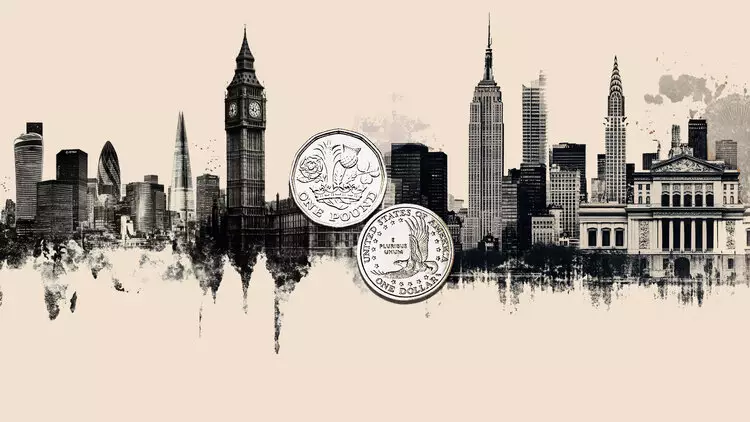In recent days, the British Pound Sterling (GBP) has shown remarkable resilience against the US Dollar (USD), bouncing back from a low of 1.3369 to trade at 1.3500 during the North American session. This surge reflects a complex interplay of geopolitical tensions and economic indicators that continue to shape market sentiment. The catalyst for this volatility was a series of actions taken by the United States against Iran’s nuclear sites, which not only unsettled the global markets but also sparked a surge in oil prices, albeit briefly. The ever-present tension in the Middle East, particularly Iran’s approval of measures to potentially close the Strait of Hormuz, has added layers of uncertainty for investors seeking stability amid the chaos.
The US’s military escalation has far-reaching impacts, not only on regional stability but also on international trade dynamics that can influence currency valuations. It creates a chop in market sentiment; one moment the dollar strengthens in response to immediate risk aversion, and the next, it falters when investors consider long-term impacts. The USD seems particularly sensitive to America’s global standing and perceived military aggressiveness, leading to mixed reactions from traders.
Economic Indicators: A Mixed Bag
On the economic front, recent data from both the UK and the US presents a nuanced picture that straddles both optimism and concern. The flash Services PMI in the UK saw an uptick to 51.3 in June, signalling expansion and suggesting a resilient service sector. However, the UK’s Manufacturing PMI continues to languish below the watershed mark of 50, finishing at 47.7, indicating ongoing contraction. Conversely, the US Manufacturing PMI delivered a better-than-expected reading of 52, while the Services PMI dipped slightly, raising questions about sustainability in the recovery.
The diverging economic narratives between the US and the UK provide fertile ground for currency movements. The troubling PMI numbers from the UK could be a harbinger of ongoing economic challenges, but the positive service sector reading injects a dose of optimism that may bolster the GBP.
Central Bank Policies: Dovish Signals from the Fed
Moreover, comments from Federal Reserve Governor Michelle Bowman have contributed to a sense of cautious optimism for the GBP, as her suggestion that a rate cut could be appropriate as early as July positions the Fed in a dovish stance. This has repercussions for the USD, leading traders to recalibrate their expectations about interest rate trajectories. When a central bank signals potential easing, it typically weakens the associated currency as lower interest rates may discourage capital inflow.
In stark contrast, the Bank of England (BoE) finds itself in a complex position, balancing the need for economic growth against persistent inflationary pressures. The prospect of increased interest rates could provide the GBP with a strong tailwind if the BoE opts for a more hawkish stance.
Technical Analysis: Navigating Resistance Levels
From a technical standpoint, the GBP/USD remains in a spirited uptrend. However, with resistance established around the 20-day simple moving average (SMA) at 1.3508, the currency pair’s capacity to rally past this point will be crucial in establishing momentum toward higher targets of 1.3550 and potentially 1.3600. Should the pair undergo a retreat, a daily close below 1.3500 could invite a pullback, placing sellers in a position to target the 50-day SMA around 1.3399.
The trading landscape for GBP/USD has transformed into a battleground where economic indicators and geopolitical events are vying for supremacy. The interplay of these elements can lead to rapid swings in currency value, thereby creating opportunities as well as risks for traders.
Investor Sentiment: Riding the Waves
Finally, the psychological factor of investor sentiment cannot be overstated in this volatile environment. Risk appetite among traders fluctuates based on geopolitical headlines and economic data releases. For instance, reactions to the ongoing events in the Middle East might accentuate caution or spark speculative behavior depending on how the narratives evolve. The interplay of these factors can create significant trading opportunities, but investors must be aware of the risks associated with such a dynamic backdrop.
In a nutshell, while the GBP/USD pair has shown signs of recovery, the road ahead is fraught with challenges that are bound to influence currency performance. With the potential for central bank actions and geopolitical tensions to reshape the landscape, investors are urged to brace for continued volatility.

